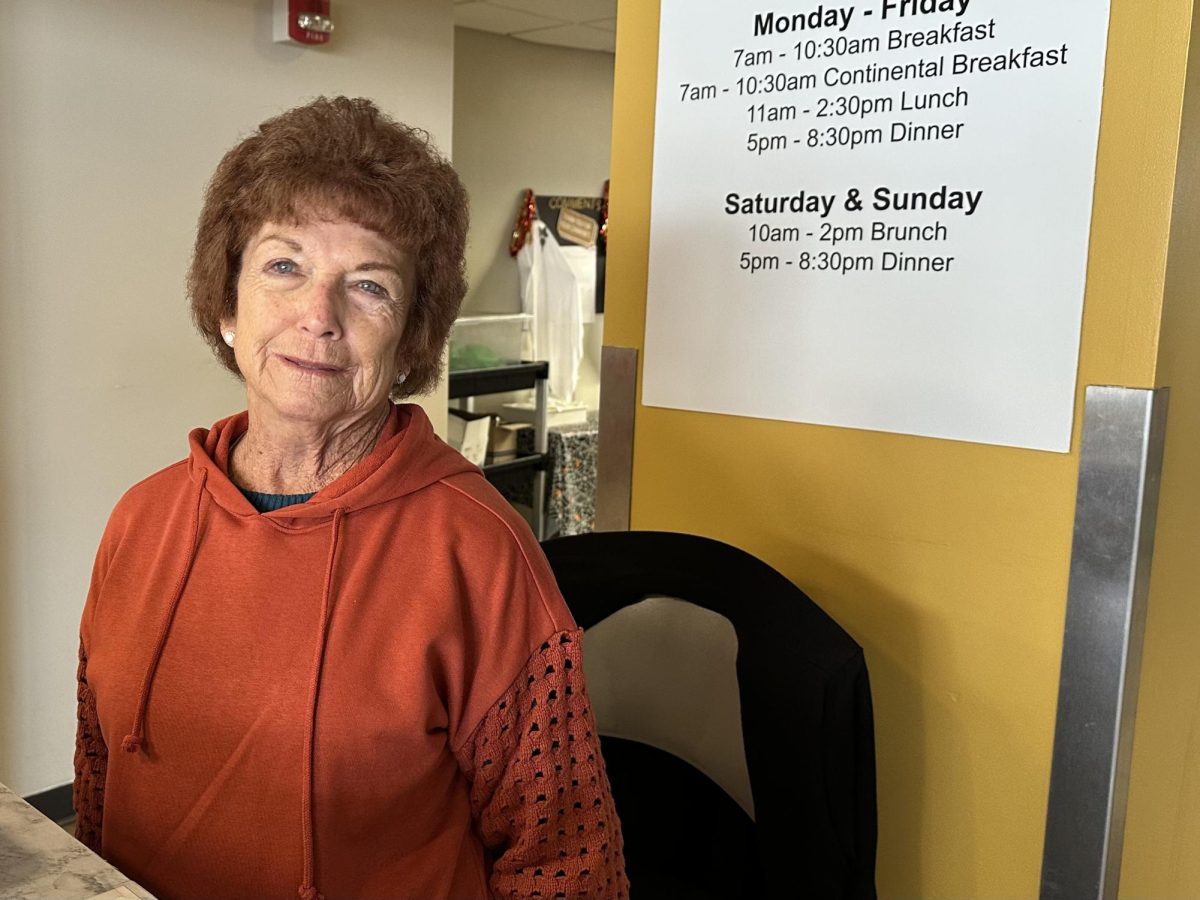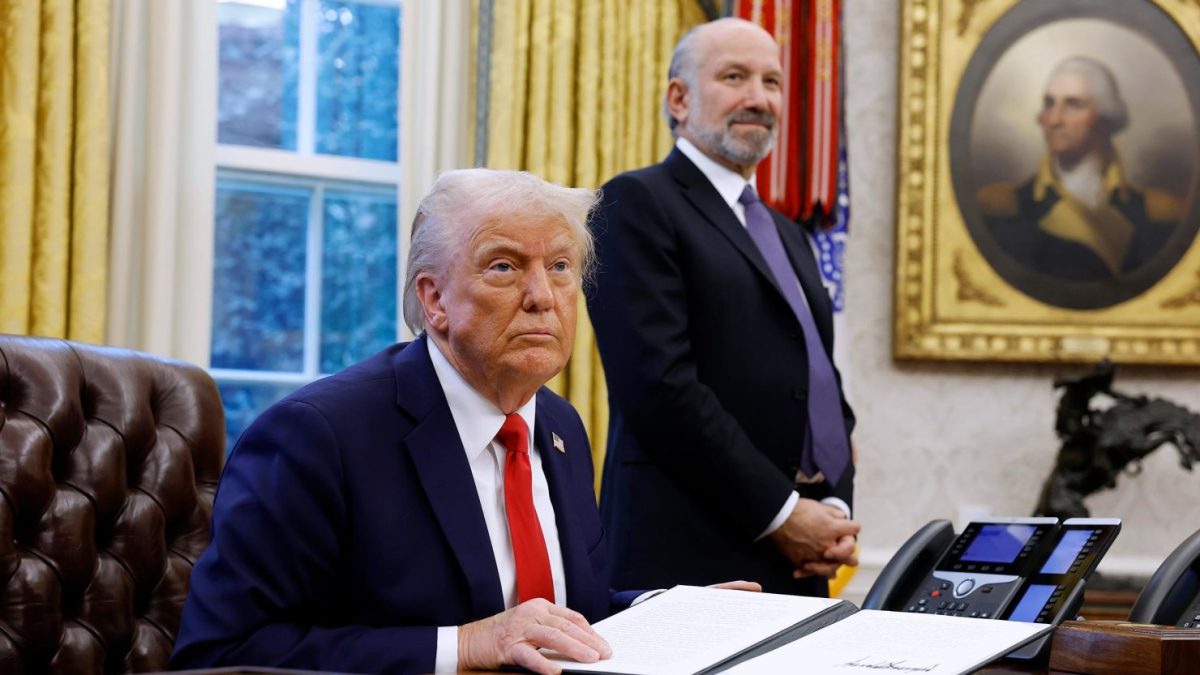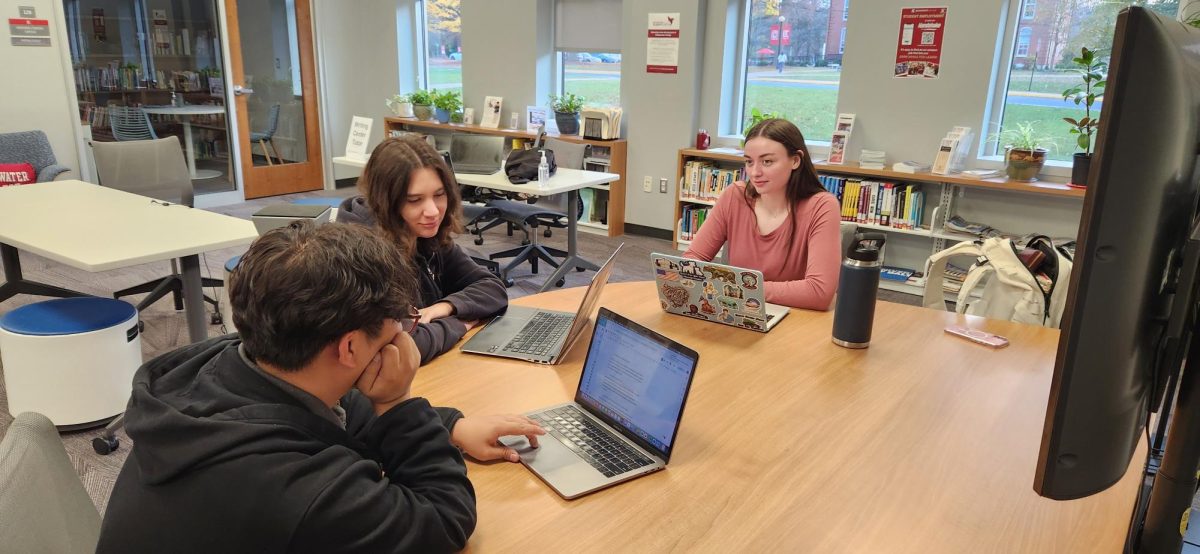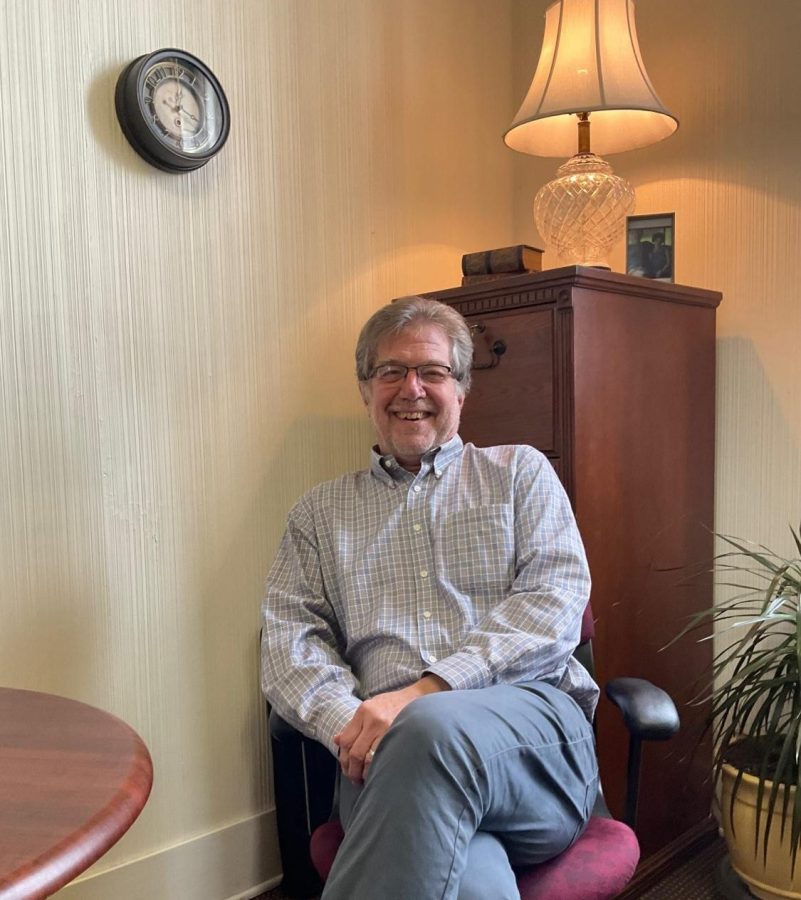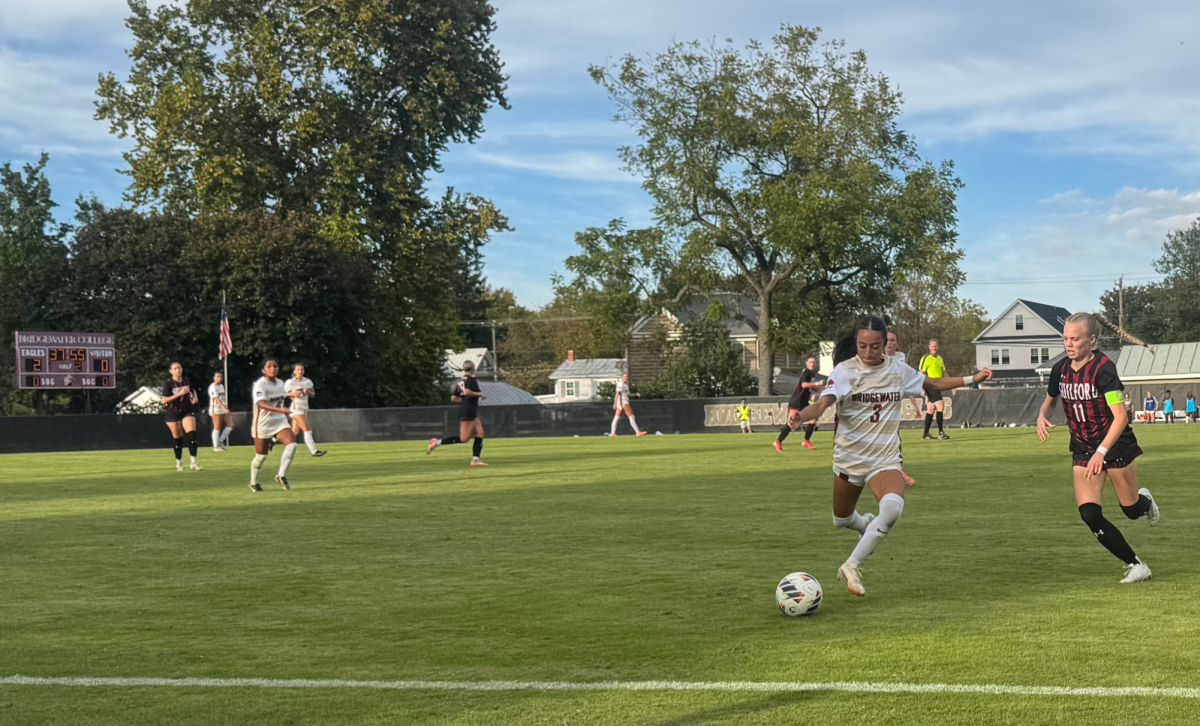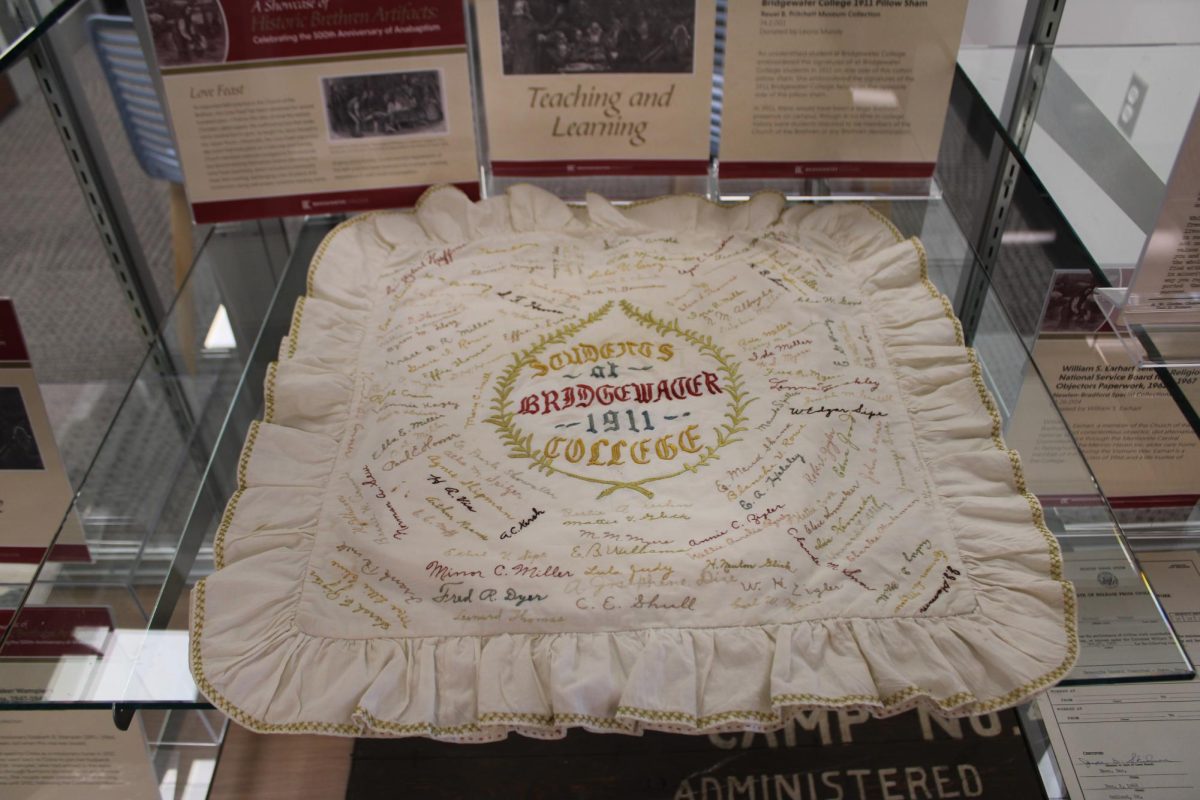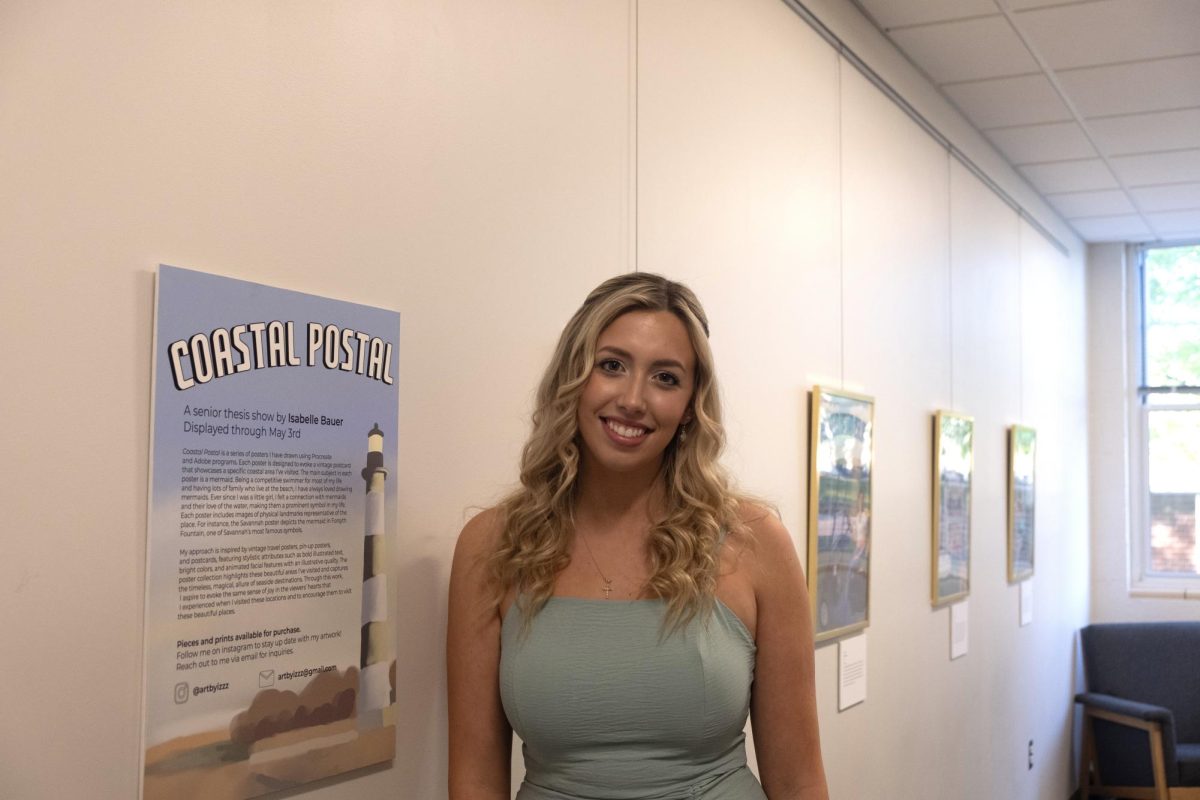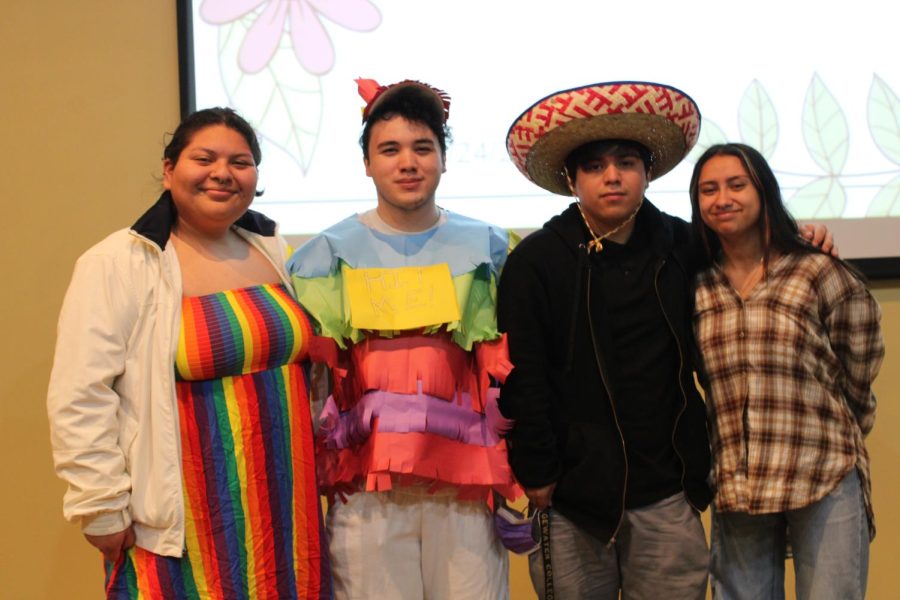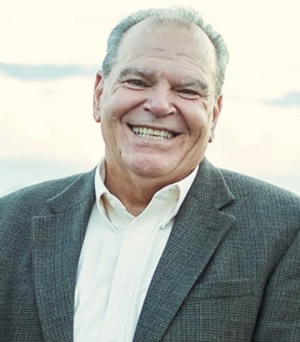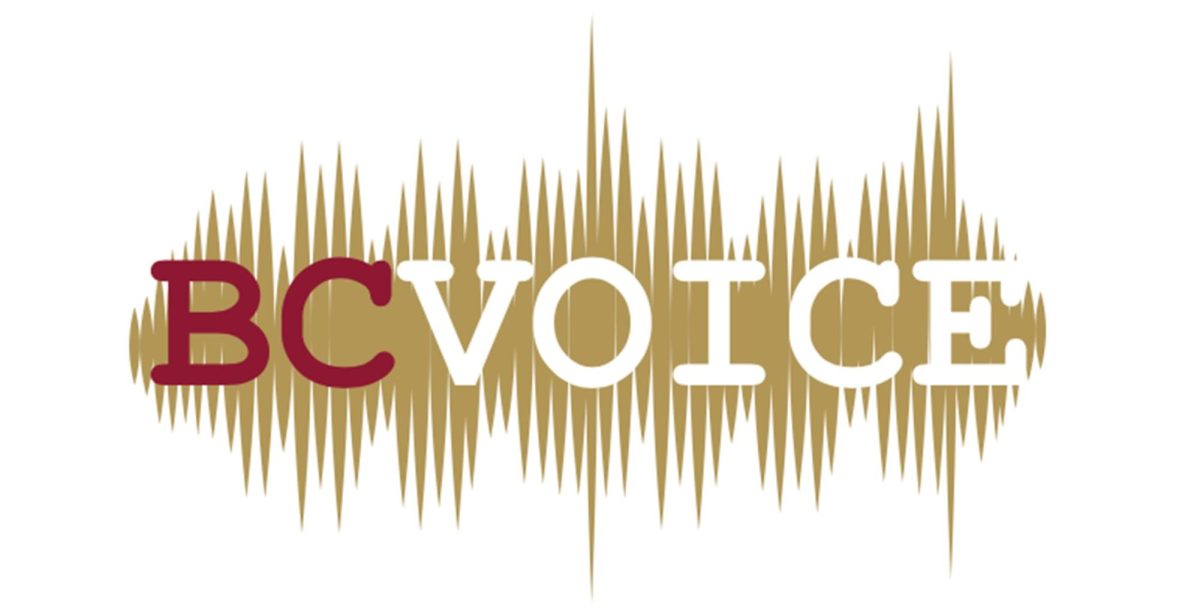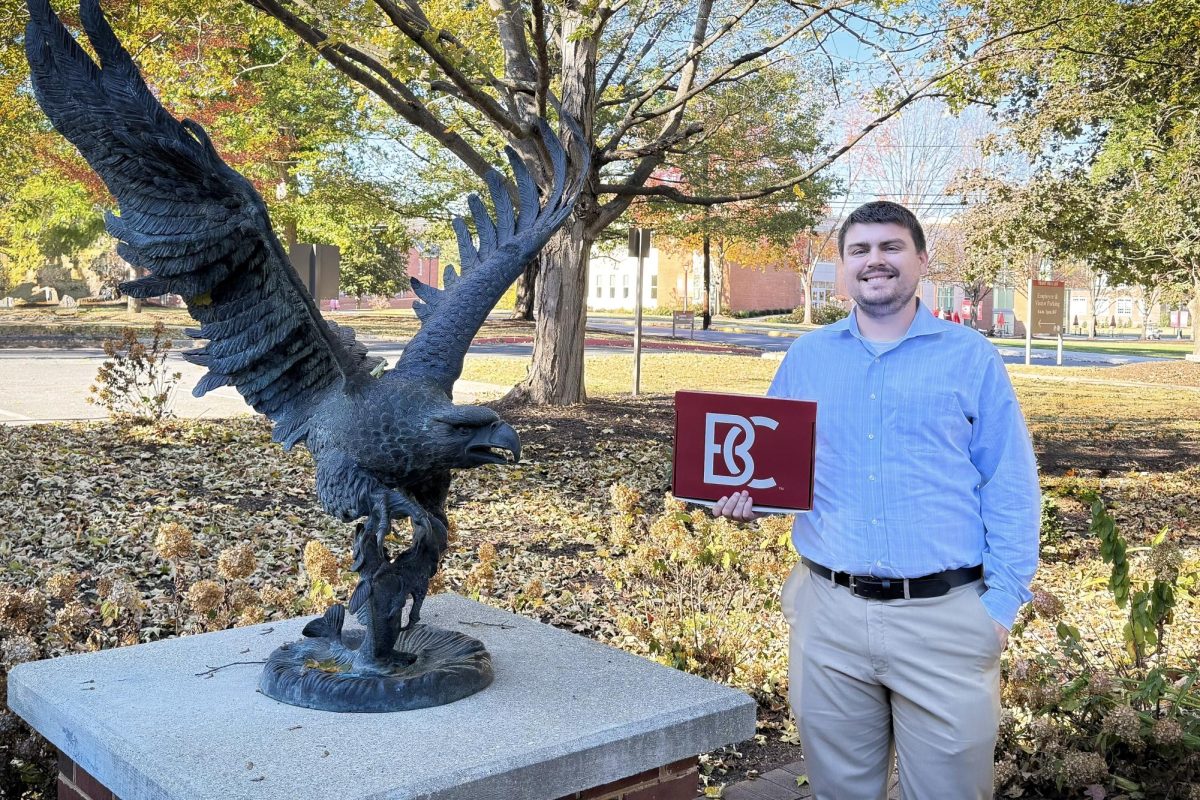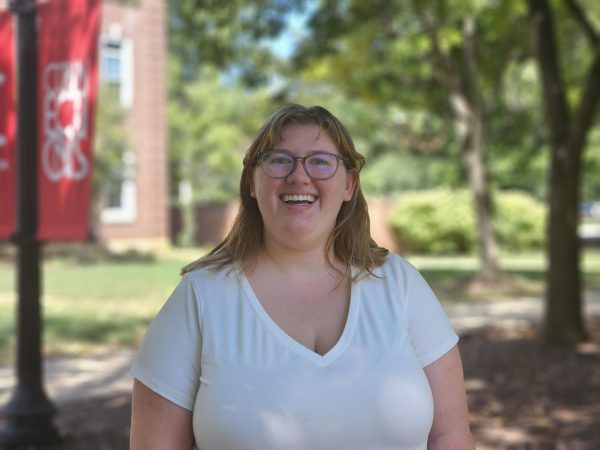Bridgewater, Va—Many Students from both the specialty education and elementary and secondary education programs have made claims that they are not getting the same quality education as other Teacher Education Program students, but the program staff have thoughts on this issue as well.
Dr. Jenny Martin, Associate Professor of Education and Coordinator of Secondary and All Grades, is a liaison between the education department and all of the different licensure areas. She makes sure that the TEP students are getting all of their education requirements so that they can be successful teachers.
Martin said about her role as the liaison between both the education program and the major that the student has chosen. “You have your specific major that you have to major in but then it can be challenging to get your education courses to be licensed in with that,” said Dr. Martin. “The reason it is a challenge is because the secondary education course series by credit is a major.”
“As soon as someone is admitted to the teacher ed program, I send an email to the registrar and am added on as a secondary advisor,” said Dr. Martin. “For example, if it’s a biology major then they will have a major advisor over in bio and then I’ll also be added on so I can approve classes and help them map out their schedule so that it all fits in the four years.”
“Same thing with All Grades [Pre-K-12th grade],” Martin said, referring to the way that scheduling is done. “As far as advising goes, it is a mixed bag. Sometimes the major advisor likes to do most of the planning and I don’t meet with those students as much if they are taken care of by their major advisor.. I get the feeling that in some majors, that’s actually preferred so that there’s not mixed messages or confusion. I reach out to all of my advisees to say ‘let me know if you need me’ and I hear from some more than others.”
Dr. Martin and other TEP faculty members take time to plan out their meetings with each of the major departments that a student could be certified to teach in.
“Last year, [another TEP faculty member] and I set up meetings with someone from every initial licensure area,” said Dr. Martin. “Before the meeting, I used a Box note to set an agenda and I linked to all of the state competencies that are tied to their classes that are required for teacher licensure.”
Different certification areas also have the right to change their curriculum as they see fit. “English really made a lot of changes,” Martin explained. “We asked them just to make sure we had all of the syllabi uploaded in a folder and that all of the competencies were assigned on this matrix.”
Dr. Martin noted that “every major has a matrix that holds the competencies required by the state and the courses that cover them.” She and a TEP faculty member had to take the time to put everything together and send it to the state to make sure that students were getting the requirements to be a teacher in the state of Virginia met by these new classes.
One of the topics brought up in the first article was that a lot of specialty majors did not feel that they were getting the same attention and resources that students getting ready to teach core subjects might have been given. For example, specialty students felt that they did not get to learn how to lesson plan for their specific class. This is important because most schools require each teacher to submit lesson plans for their class, and if up and coming teachers do not know how to plan for their class, that could lead to other issues in their future work environment.
Dr. Martin focuses on including every content area in her class to ensure that her students are prepared to teach in their own classrooms. “They do a very common literacy lesson plan where you focus on a text,” said Dr. Martin. She gave several examples of the type of text that they can use, such as sheet music, a play or a video. “Students then have to create a list of reading strategies, what do they need during the reading of it, and what do they need after,” said Dr. Martin.
Another thing that was addressed was how Dr. Martin integrated lesson planning and teaching into a room with so many different subject areas. She mentioned a pair of students who did a lesson together that were in different content areas. “[Student 5] is a biology, [Student 6] is math,” said Martin.
Martin provided an example of effective co-teaching, wherein a student majoring in biology and another majoring in math collaborated on Stem to explain how scientists identified the age of dinosaurs.
While this seems to work as a solution and is slowly becoming more of a practice in the classroom due to the rise of mixed classrooms and lab schools, many students were not satisfied with that answer.“I see how she tried to cater to everyone but it is not a one size fits all situation,” (Student 2)
Another area that students felt needed improvement was the placement program which is led by Dr. Jennie Carr. BC Voice reached out for a comment, but did not hear back from her.
BC voice will amend the story to include her comments when she responds to our inquiry.
This article was written to start a conversation between the TEP faculty and students about how to better fit everybody’s needs. While no program will ever be perfect, it is a good start to a much needed conversation.
Another area that students felt needed improvement was the placement program which is led by Dr. Jennie Carr. Included is the full email interview.
In your own words, please describe your role in the teacher-ed program.
My primary responsibilities include working collaboratively with faculty, departmental partners, and teacher candidates to assign, request, and clinical placements with schools each semester for the following coursework EDUC 225: Community Education; EDUC 301: Field Experience; EDUC 307: ESL Methods, EDUC 330: Early Literacy, EDUC 334: Content Literacy, EDUC 371E: Elementary Classroom Management, EDUC 372E: Secondary Classroom Management, EDUC 380X: Practicum in Current Teaching Techniques, EDUC 406: Elementary Curriculum & Instruction, EDUC 412: Secondary Curriculum & Instruction, EDUC 465: ESL Student Teaching, EDUC 470: Student Teaching, ES 401: Elementary Physical Education Methods, ES 402: Secondary Physical Education Methods, ES 370: Adaptive Physical Education. But it’s not just as simple as requesting placements. I serve as the liaison between our partners communicating critical placement information, resources, and training opportunities. I manage all the placement and training data based on our National Accreditation Standards. I also organize and facilitate Student Teaching Orientations for teacher candidates and Bridgewater College Supervisors as well as Teacher, Substitute and Coach annual recruitment fair to help candidates connect with future employers. There are likely other aspects of my role that I didn’t include above.
What does it mean to be nationally accredited?
Bridgewater College’s Teacher Education Program (TEP) was fully-accredited with no areas of improvement or stipulations on April 26, 2021, by the Council for the Accreditation of Educator Preparation (CAEP). This action resulted in the maximum 7 year accreditation. Additionally, CAEP awarded the TEP the Frank Murray Leadership Award for Continuous Improvement at the Fall 2021 CAEP Conference. CAEP Standard 2 is solely focused on clinical partnership, which states, “The provider ensures effective partnerships and high-quality clinical practice are central to candidate preparation. These experiences should be designed to develop the candidate’s knowledge, skills, and professional dispositions to demonstrate a positive impact on diverse students’ learning and development. High quality clinical practice offers candidates experiences in different settings and modalities, as well as with diverse P-12 students, schools, families, and communities. Partners share responsibility to identify and address real problems of practice candidates experience in their engagement with P-12 students.” As the Clinical Partnership Coordinator, I support Bridgewater College TEP adherence to the state competencies, national standards, and best practices.
What are the partnerships like?
Bridgewater College holds partnerships with many school divisions and education-related entities. As a Teacher Education Program, we believe in the power of theory and practice. Teacher candidates in our program work through multiple clinical placements throughout the program. I work collaboratively with faculty and partners to develop mutually beneficial clinical experiences. Our clinical placements align with course objectives and are intentionally scaffolded to prepare teacher candidates for future placements, student teaching, and ultimately employment. Partnerships are a pivotal component of our teacher education program as they provide authentic experiences for students to explore learning theories.
What is the placement process like for you?
The placement process is very involved and requires meticulous detail and organization. It takes a significant amount of time. I work with faculty to co-construct mutually beneficial P -12 school and community arrangements for clinical preparation and share responsibility for the continuous improvement of candidate preparation. Bridgewater College Faculty have created a Scope and Sequence document to ensure placements are scaffolded and built throughout the program based on breath, depth, diversity, coherence, and duration. For the purpose of this response, I will use depth, breadth, and diversity as examples. We want to ensure our candidates have a multitude of diverse teaching and learning experiences to prepare them for future employment:
- Depth: Placements are sequential and become more intense in the depth of expectations, assignments, hours, and experiences throughout the program as they ultimately move into student teaching.
- Breadth (such as but not limited to placement variety: Pk-2 grade bands and 3-6 grade bands for elementary candidates OR 6-8 grade band and 9-12 grade bands for secondary candidates OR Pk-6 grade band, 6-8 grade band, and 9-12 grade band for all-grade candidates).
- Diversity: Teacher candidates are placed at different schools throughout the program (such as but not limited to county and city district placements)
See the table below which can provide additional context.
What is the placement process like for a student?
Teacher candidates enroll in courses with clinical experiences. See below regarding placement process. Teacher candidates are always welcome to come and talk with me about clinical placements. It’s particularly helpful for teacher candidates to share if they don’t have a vehicle so I can try to partner them with a colleague.
What are some examples of placements that BC students have experienced?
Again, I track all candidate’s clinical placements throughout the program. The following table provides a few hypothetical example of breadth of placements for each of our licensure pathways. As mentioned above, I also track for depth, diversity, coherence, and duration.
| Licensure Pathway | EDUC 225 | EDUC 330/334 | EDUC 371E/372E | EDUC 380X Practicum | EDUC 465/470 Student Teaching |
| Teacher candidate “A” P-6 Licensure | Community Education | Grades P-2 | Grades 3-5 | Grades P-2 | Grades 3-5 |
| Teacher candidate “B” P-6 Licensure | Community Education | Grades 3-5 | Grades P-2 | Grades 3-5 | Grades P-2 |
| Teacher candidate “C” 6-12 Licensure | Community Education | Middle School (Grades 6-8) | High School (Grades 9-12) | Middle School (Grades 6-8) | High School (Grades 9-12) |
| Teacher candidate “D” 6-12 Licensure | Community Education | High School (Grades 9-12) | Middle School Grades 6-8) | High School (Grades 9-12) | Middle School Grades 6-8) |
| Teacher candidate “E” P-12 Licensure | Community Education Community Education | Elementary School Grades (P-5) | High School (Grades 9-12) | Elementary School Grades (P-5) | Middle/High School (Grades 6-12) |
| Teacher candidate “F” P-12 Licensure | Community Education | High School (Grades 9-12) | Middle/High School (Grades 6-12) | Middle/High School (Grades 6-12) | Elementary School Grades (P-5) |
What do you look for when placing students?
The Teacher Education program has outlined criteria which are used for co-selection of cooperating teachers in early placements, practicum, and student teaching. This criterion is stated transparently in the Teacher Education Program Handbook. Placements are made with cooperating teachers who have at least two years of experience, hold a valid teaching license in their discipline, and teachers who are Midvalley Clinical Faculty Trained or are recommended by the building administrator based on their performance and positive impact on learners. Because student teaching is the culminating placement, a 15-week internship-style clinical placement, teacher candidates complete a detailed application. Teacher candidates have the opportunity to offer grade level preferences, content areas, and school divisions. I also personally invite all student teaching candidates to meet with me 1:1. I have a list of preference questions that I ask teacher candidates as well as a map of school divisions we typically place to help all teacher candidates understand the local divisions. One of the benefits of attending a small school is the personal attention I provide as the CPC to work toward meeting teacher candidate’s career goals. An example of this is I had a teacher candidate who has an English minor and ESL endorsement, because the teacher candidate shared this career goal with me in our 1:1 session. I was able to place them in a 5th-grade dual English classroom. Another example is a candidate who is passionate about working with special education. I was able to coordinate a placement for the candidate in a high inclusion classroom. I’m proud of this work and how I am able to support teacher candidate’s career goals. For many licensure areas, I also work collaboratively with incredibly knowledgeable BC Faculty like Dr. Christine Carrillo and Dr. Amanda Campbell to identify cooperating teachers. I’m so grateful for the collaborative support from all our departmental partners. I track their recommendations and use this data for the future placement selection process throughout the program.
What happens if a student is unhappy with their placement?
I believe it’s important for teacher candidates to have an open mindset when they attend every placement. It’s important to believe you can learn from every experience. All of our placements are paired with a course and a highly qualified faculty member. Faculty members are the first contact for candidates as they can help candidates to navigate challenges and questions that occur in their placement. Second, I always have an open-door policy. In all my email communication with teacher candidates, partners, and cooperating teachers, I invite them to reach out to me with any questions or comments. Since I became the CPC, I have offered teacher candidates the opportunity to evaluate their clinical experience and ask them if they recommend to work as a cooperating teacher to be used in the future. I keep all this data and refer to it when I begin the placement process. According to this survey data, over 95% of candidate respondents recommend their cooperating teacher and 100% indicate their placements align with course objectives. This data indicates the overwhelming majority of candidates find their placements beneficial to their growth as a teacher.
According to one of our sources, they have this perception that in order to get a good placement, they need to have a positive relationship with you. Would you mind addressing that?
I take my role as clinical partnership coordinator very seriously and work to ensure high-quality placements for every teacher candidate.
With this comprehensive view of the Teacher Education program from the perspective of the students and the faculty we can move forward to create a better environment for everybody.



